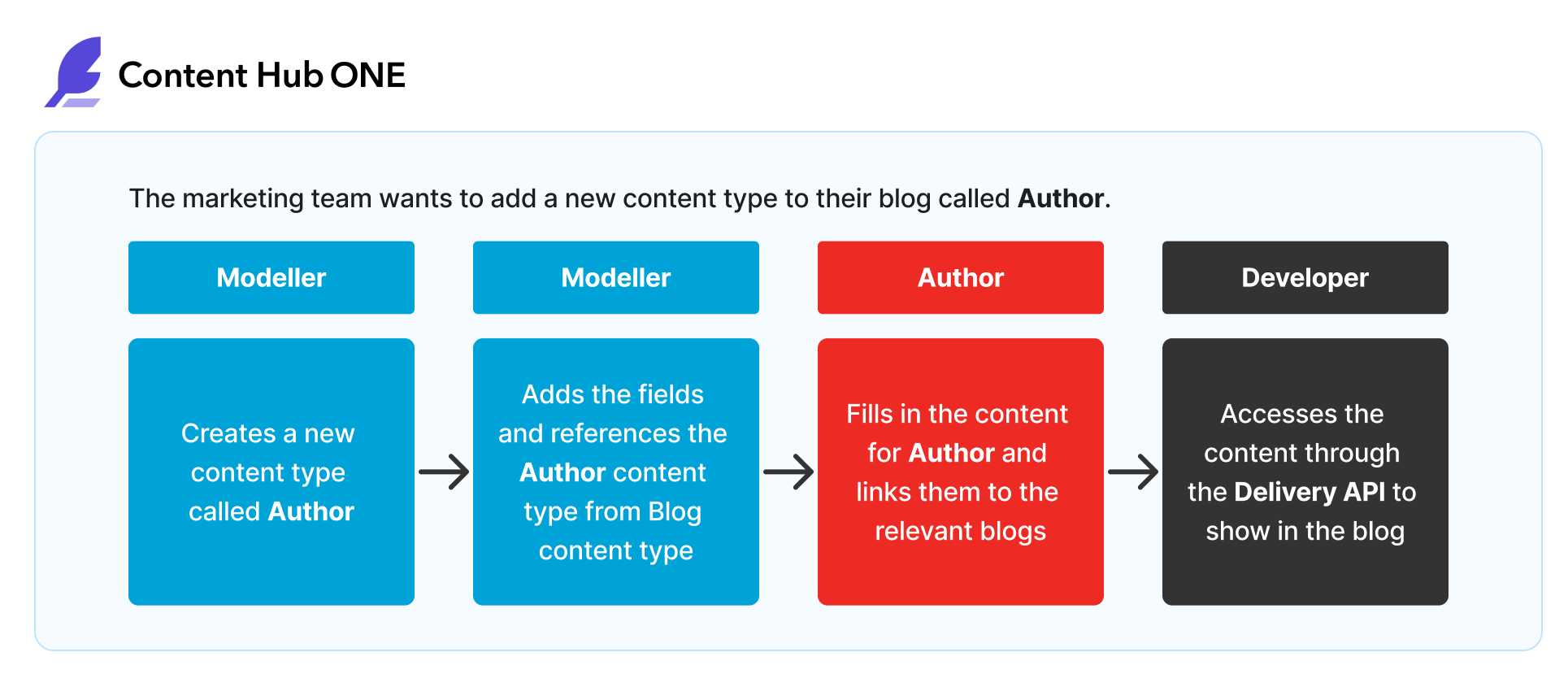Introducing Sitecore Content Hub ONE
Sitecore continues to invest in their vision of helping organizations future proof their businesses with a truly composable digital experience platform (DXP). The latest release in Sitecore’s best-in-class SaaS-based products, features a content cloud called Content Hub ONE.
With the rising importance of content marketing, organizations need to easily manage the accelerated pace of engagement and growing number of customer channels. Customers have come to expect relevant content and personalized experiences at every touchpoint.
This blog will explore how Content Hub ONE can help your organization easily deliver omnichannel experiences to multiple audiences across all touchpoints.
What is Content Hub ONE?
Content Hub ONE is a lightweight, headless content management system (CMS) offering. It’s an approachable content marketing tool designed to manage the needs of content modellers, authors, and developers in one easy-to-use place. This omnichannel delivery CMS lets you define content types, store content based on those content types, store media assets, and publish content. The published content and assets will be accessed through the Sitecore Experience Edge CDN endpoints and consumable through—web, mobile app, kiosk, social media, POS systems, and more.
While XM Cloud remains Sitecore's enterprise-level CMS, built to manage more complex content for the web, Content Hub ONE is the more streamlined and agile counterpart. This agile CMS is channel agnostic and features an easy-to-use interface and APIs to create, update, and reuse content across all channels. You'll also be able to seamlessly integrate it into your technical teams' favourite front-end framework.

More Content Hub ONE features include:
- Flexible content modelling frameworks
- Easy content authoring and publishing
- Search, filtering, and sorting functionality
- Content management APIs
- Delivery preview
- Simple media management
Benefits of Content Hub ONE
Content Hub ONE uses the concept of modular content, or structured content, to create dynamic content models. Structured content allows for reusable content that is flexible for more efficient workflows and faster speed-to-market.
Here are some examples of how Content Hub ONE can manage and serve content across any channel with an agile headless CMS can benefit your organization:
| Content Hub ONE Benefits | |
|---|---|
| Flexible content modelling | Model any type of content across any channel quickly and easily |
| Easy content authoring | Effortless and intuitive content authoring for marketers, content creators, translators, and more |
| Reusable content across any channel | Create content once and serve it across multiple channels — web, apps, kiosks, voice assistants, etc. |
| Independent team workflows | Enable marketers to focus on creating memorable digital experiences while developers build the necessary delivery framework |
| Multi-lingual and framework agnostic | Developers have their choice of APIs supporting popular front-end frameworks |
| Global lightning-fast performance | Instantly access published content using GraphQL API endpoints around the world |
How Does Content Hub ONE Work?
To understand Content Hub ONE better, we’ve broken down the different functionalities by team member / discipline and what capabilities they’ll have access to. Each team can work independently to get the right content out to their different audiences and channels.
Content Modellers
Content modelling is an important facet of the Content Hub ONE ecosystem. Content modellers can create content types or templates to simplify the content creation process for their content authors. If your content authors are consistently writing articles with the same structure (i.e. blog posts or social media posts) you can easily configure a template to save them time and improving their speed-to-market.
To create a content model, you will need to define a content outline to determine how content will be structured. Once a content outline is created, content templates can be developed to ensure the right content is delivered to the right audiences.
Here are five design principles to consider when creating a content model:
| Content Modelling Design Principles | Considerations |
|---|---|
| Content Model |
|
| Content Use |
|
| Content Reuse |
|
| Content Validation |
|
| Customer Journeys |
|
Here is an example of a content model and what content types can look like for a company that sells coffee drinks:

Content Authors
In Content Hub ONE, content authors can easily create content across multiple channels using the predefined fields outlined by the content modellers. The different content types can be used as templates to draft new content for customer across any channel. Content authors that regularly create the same content can benefit from a templated structure and streamlined process. These content types can provide content authors with a clear, well-defined field structure, with field labels and helpful suggestions to make content creation easier. It also keeps content consistent by following an agreed upon guideline.
Content Developers
Content Hub ONE allows content developers to deploy and create content across different channels with simple APIs and deliver it using Sitecore Experience Edge CDN endpoints. Technical teams can seamlessly integrate their favourite front-end frameworks into Content Hub ONE, which is channel agnostic.
Content Hub ONE Workflow Example
In this example, our marketing team would like to create a new content type for our blog. This content type is called Author. An example Content Hub ONE workflow would look like this:

Content Hub vs Content Hub ONE
At first glance, Content Hub ONE looks like an extension of Sitecore Content Hub, but after more investigation, we found that’s not the case. While Content Hub ONE has similar origins to Content Hub in the way it streamlines content management, it’s a distinct product on its own. Its a composable piece of a DXP the same way Content Hub’s Digital Asset Management (DAM) can be used independently. Think of Content Hub ONE as a simpler and less expensive entry point into Sitecore’s full content management portfolio of products, and the full version of Content Hub.
Want to Know More?
Content Hub ONE allows digital marketers to quickly model, create, and publish omnichannel content across multiple touchpoints. If you’d like more insight into Content Hub ONE’s features and benefits, reach out to our team of Sitecore MVPs at [email protected]. We can help you determine if an agile headless CMS can benefit your organization’s digital marketing needs.




